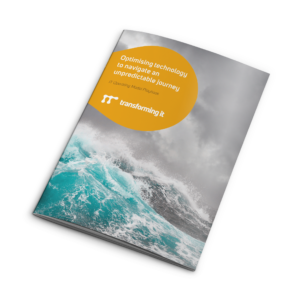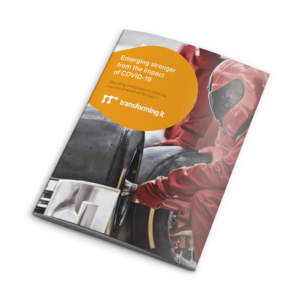At the end of each Vendee race most teams will be celebrating, some for winning but many just for successfully completing the gruelling race and the safe return of their boat’s skipper, but what the best teams will be doing is reflecting on the successes and failures from previous races, with everyone involved bringing the best of their capability to ensure both the technology used and lessons drive decision making during the next Vendee race.
Getting right to the point, the preconceived beliefs of key stakeholders and outdated modes of working are the biggest blocker to success when looking to transform your IT Operating Model. You need everyone to approach the transformation with their knowledge and expertise at the start line, but without a blinkered view on how to achieve the best outcome.
And it’s this collectively agreed best outcome, the value to be delivered for the whole organisation, that is your destination, your North Star, so put it right at the heart of the change agenda.
The transformation you’re looking to achieve needs to be sustainable, so rather than a one-off programme, the goal is to put in place the 4 cornerstones that enable your IT department to operate a high performing technology infrastructure now and into the future:
Remember, your IT Operating Model is there to ensure technology decision making is as effective and efficient as possible, but this must be in line with collectively agreed principles and their implications, which may fundamentally change how you deliver to customers and technology users, the approaches to internal operations and the engagement of your supply chain. This will only come when you have clarity on approach and trust in your IT leadership team to enable your organisation to successfully navigate challenges that present themselves in the short and long-term – establish the 4 cornerstones.
No room to get it wrong: Do or die while competitors prosper
A half-hearted approach is the difference between life and death for sailors in the Vendee Round the World race. None of them can afford to cross the start line not having put in place every element needed to give the best chance of success, whether that be winning or completing the journey.
With the challenges your business will be facing over the coming years, failing to implement technology that enables your people to perform to the highest level possible, because the initial model design principles wrong, or focus was lost on continued evolution of practices, is not an option.
Desire to win from the top: Making it the way of working
To implement a new IT Operating Model and gain agreement for the investment into the required changes, the need to improve relationships, trust and ownership between groups and individuals must be driven from senior positions – from the top. You won’t succeed if all involved don’t buy-in to it.
This will set the process off on the right tack, where open, honest and innovative conversations can thrive in the project and day-to-day operations. The necessary critical assessment of proposals and decisions can be accepted as positive input, keeping your investment in change on track to deliver the intended goals.
Look out for part 3 next month when we’ll share our defined models and formula for success.

